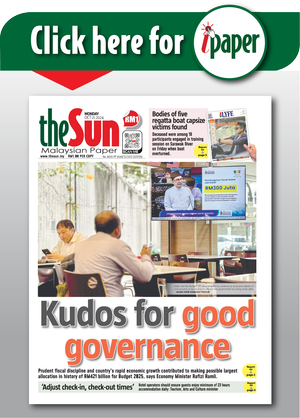KOTA KINABALU: The number of hardcore poor in Sabah has dropped to 5,379 household heads (KIR) in the e-Kasih system as of June 30 this year, compared to 22,510 last year, the State Assembly was told today.
Chief Minister Datuk Seri Hajiji Noor said of the 22,510 KIR who were in the hardcore poor category last year, the status of 17,131 KIR had changed, with 14,146 KIR now in the poor category with a household income of between RM1,218 and RM2,742.
“A total of 2,093 KIR have changed to above the poverty level with a total income of more than RM2,742; 477 KIRs died but still on the locked figure list; 394 KIRs could not be traced; and 21 KIRs had moved to other states,” he said.
He was responding to an oral question from Datuk Seri Mohd Shafie Apdal (Warisan-Senallang), about measures by the state government to achieve the target of zero hardcore poor in the state by July this year.
Hajiji said the drop proved true Prime Minister Datuk Seri Anwar Ibrahim’s call for cooperation between the federal and state governments to realise efforts to eradicate hardcore poverty.
“Although the fieldwork is limited due to Sabah’s unique geographical conditions, the state government will continue to work to realise the Prime Minister’s aspiration. However, the deadline may be extended a bit,” he said.
Hajiji said he had also instructed the Sabah Maju Jaya Secretariat (SMJ Secretariat), together with the Sabah State Development Office (PPN Sabah), to establish a Special Task Force to speed up the agenda of eliminating hardcore poverty in the state.
“The main objective of this Special Taskforce is the implementation of the cleansing and profiling work to identify the latest status of the KIR,“ he said.
The state government, he said, had also developed 13 indicators to determine the validity of the hardcore poor status of the KIR, which will assist in deciding the type of aid that is needed.
“The SMJ secretariat as the secretariat of the Eradication of Hardcore Poverty in Sabah will coordinate the data of the KIR concerned and then match them with the appropriate assistance.
“The aid matching and intervention activities involve the collaboration of 27 aid-giving agencies consisting of 10 state ministries, nine state government agencies, seven federal government agencies and one industry player,“ he added









